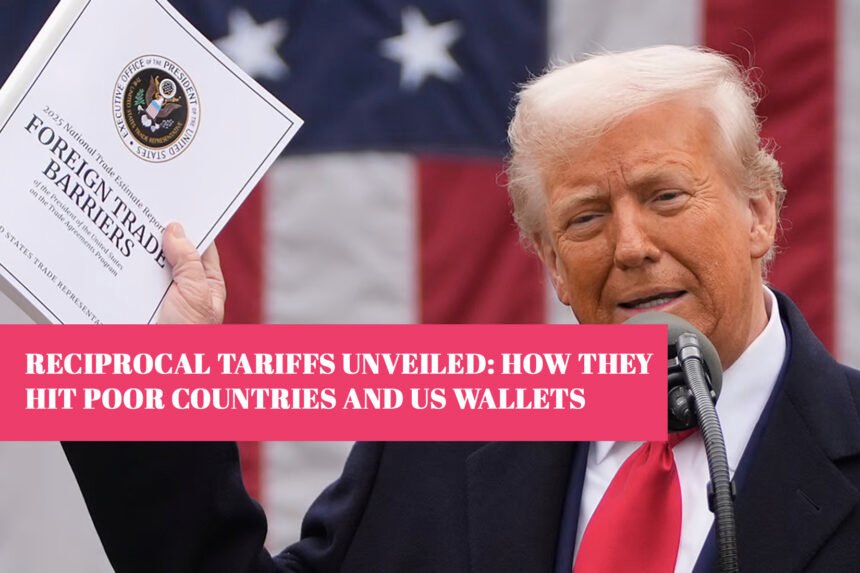Donald Trump’s recent announcement of reciprocal tariffs has sparked widespread criticism from economists who argue that the methodology used to calculate these tariffs is flawed and economically unsound. The plan, unveiled on April 2, 2025, imposes a baseline tariff of 10% on imports from all countries except Canada and Mexico, with higher tariffs applied to nations with larger trade deficits with the US.
How the Tariffs Are Calculated
The formula used by the US Trade Representative (USTR) to determine these tariffs is based on each country’s trade deficit with the US divided by the value of goods imported from that country. The resulting figure is halved to arrive at the tariff rate. For example, Vietnam and Cambodia, which export large quantities of goods to the US but import very little in return, face punitive tariffs of 46% and 49%, respectively. In contrast, countries like the UK, which have a trade surplus with the US, are subject only to the baseline 10% tariff.
Criticism of the Methodology
Economists have heavily criticized this approach, calling it simplistic and detached from real-world trade dynamics. Thomas Sampson, associate professor of economics at the London School of Economics, described the formula as a “fig leaf” for Trump’s obsession with bilateral trade imbalances. He argued that trade deficits are driven by macroeconomic factors like savings and investment levels rather than tariff rates. “As long as the US doesn’t save enough to finance its investments, it will run a trade deficit,” Sampson explained.
Oleksandr Shepotylo, an econometrician at Aston University, echoed these sentiments, calling the goal of reducing bilateral trade deficits to zero “insane” and economically unjustifiable. He added that while the formula appears linked to economic theory, it is fundamentally disconnected from how global trade operates.
Impact on Poorer Countries
The tariffs disproportionately target poorer nations with large trade surpluses with the US. John Springford, a trade economist at the Centre for European Reform, noted that these measures would shift surpluses to other low-income countries producing similar goods like T-shirts and electronics. He also warned that US consumers would bear the brunt of these tariffs through higher prices, as businesses pass on costs.

Springford further argued that currency appreciation caused by higher tariffs could hurt US exports and offset any intended benefits. “This policy is both economically destructive and poorly conceived,” he concluded.
Broader Economic Implications
Economists have pointed out that tariffs often lead to unintended consequences. For instance, Innes McFee from Oxford Economics highlighted that such measures would likely result in a real income shock for American consumers rather than reducing trade deficits effectively. Historical evidence shows that tariffs raise prices for goods and reduce economic output by increasing production costs and limiting consumer spending.
Missed Opportunities for Comprehensive Trade Policy
Critics also noted that Trump’s administration had initially promised a more nuanced approach to reciprocal tariffs, factoring in non-tariff barriers like regulations and subsidies. However, this plan was abandoned in favor of a mechanical formula based solely on nominal trade deficits.
Felix Tintelnot, associate professor at Duke University, emphasized that trade deficits are not static and can fluctuate due to broader macroeconomic decisions unrelated to tariff rates. He warned that this unpredictability could complicate negotiations and create uncertainty for businesses relying on international markets.
Trump’s reciprocal tariff plan has raised concerns about its effectiveness in addressing trade imbalances while exposing flaws in its underlying methodology. Economists argue that such measures could harm poorer countries, increase costs for US consumers, and fail to resolve systemic issues driving America’s trade deficit. Instead of fostering fairer trade relations, this policy risks destabilizing global markets and creating economic inefficiencies for all parties involved.
MUST READ: US vs India Trade: Trump Takes on India’s 52% Tariff with a 26% Comeback










